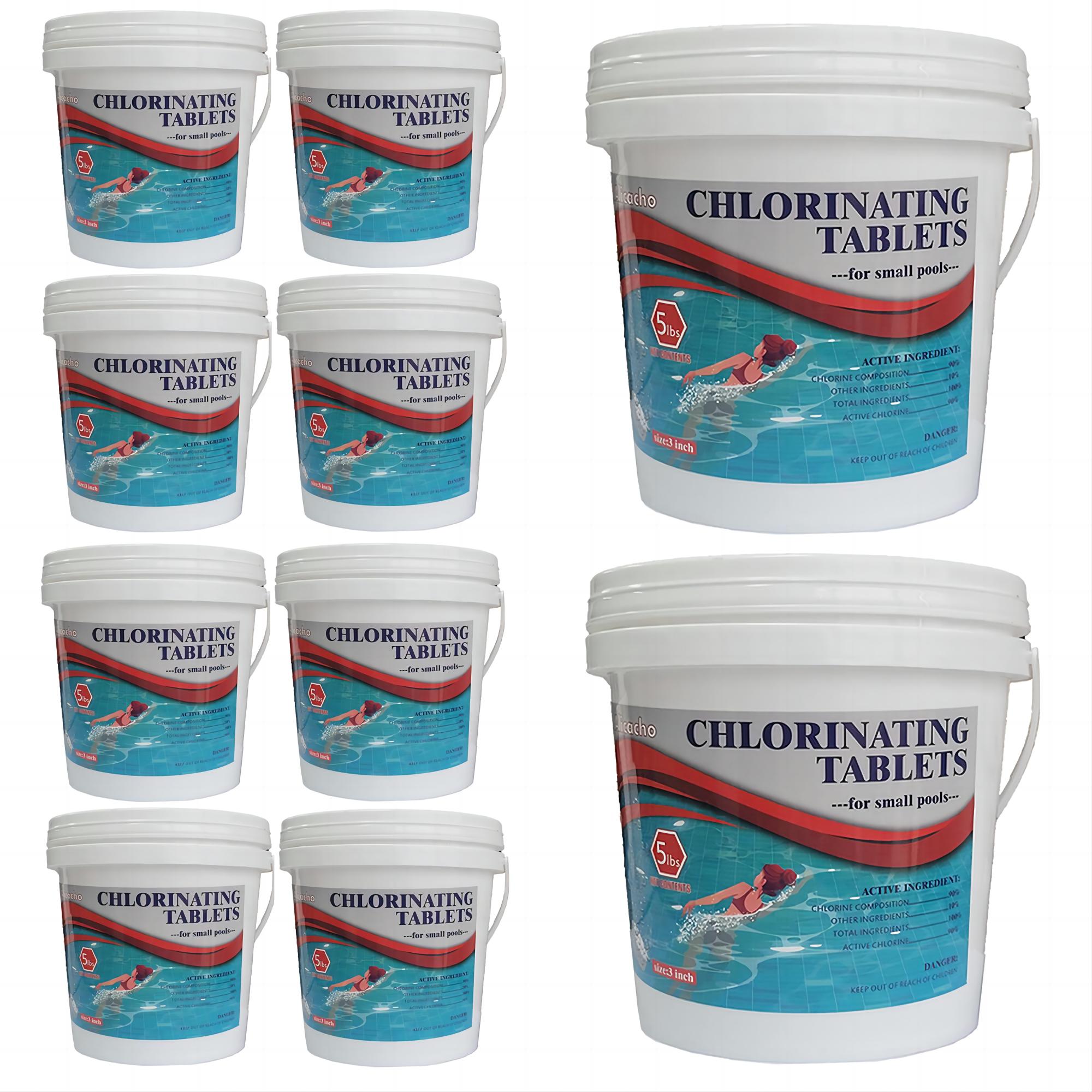Do you have any idea about what is the highest chlorine level safe to swim in? There is a recommended range of free chlorine for both hot tubs and swimming pools by the Association of Pool and Spa Professionals and the Center for Disease Control. These ranges can be ideally said to be the legal limit ranges that must be followed.
As a pool owner, it is your responsibility to ensure that your hot tubs and pools are both clean, healthy, and safe to swim in. And one of the things that you can do to make it possible is to keep the range of free chlorine at the right range.
Some factors must be considered when it comes to identifying the correct range, and to know these levels and ranges, using a testing kit can help. In this article, we will discuss facts on what is the highest chlorine level safe to swim in, and ways to lower chlorine level once it is too high. We will also learn about the possible side effects of too much chlorine in our pools, so let us begin!
Part 1. What is the Legal Limit of Chlorine in a Pool?
Before we go further and identify the highest chlorine level safe to swim in, let us first figure out the legal limit of chlorine that must be present in a pool. The required chlorine levels in both pools and hot tubs are different. Aside from considering other levels of components that may be present in our pools, some organizations and associations implement chlorine level ranges that are considered legal.
If you are a pool owner, you should familiarize yourself with different associations and organizations that implement rules and legalities in running a pool, most especially if you own commercial pools.
One of these organizations is the Association of Pool and Spa Professionals which recommends a range between 2.0 and 4.0 ppm for both swimming pools and hot tubs. There is another one, and it is the Center for Disease Control which recommends that free chlorine must stay above 1 ppm for pools and 3 ppm for hot tubs.

These levels must be followed especially if your area implements such ranges. There are other important things to know when it comes to chlorine ranges, and we are about to discover more about it as we go along the article, below.
Part 2. What are the Side Effects of Too Much Chlorine in a Pool?
Of course, if there is too much chlorine in a pool there must be an equivalent effect to its users. This is why it is important to figure out what is the highest chlorine level safe to swim in. Chlorine is added in pools to make sure that harmful microorganisms and bacteria are killed, and there is proper avoidance of contamination, irritations, and even diseases, however, when there is too much, effects can also be the same, and sometimes worse.
1. Irritation of the Lungs
According to doctors, chloramine and chlorine are both considered respiratory irritants. This means that, once chlorine is unbalanced in pools or hot tubs, you are most likely to suffer from different side effects such as lung irritation, lung injury, or COPD also known as chronic obstructive pulmonary disease. It is also not good if you have pre-conditions such as asthma.
2. Chlorine Poisoning
It is not just lung irritation, high doses or presence of chlorine in pools can also cause chlorine poisoning. If you inhale chlorine or swallow it, it is possible to happen according to experts. To determine if a person is over-exposed to chlorine, there are symptoms to watch according to the Centers for Disease Control and Prevention, and these are:
- Nausea
- Blurry vision
- Rash brought by chlorine or if there is a presence of blistered or reddish skin
- Difficulty in breathing and coughing
- Vomiting
- The feeling of burning in the nose, eyes, and throat.
If you ever feel any of these and the symptoms get worse or persist, seeing a doctor must be done. You can also get fresh air, and rinse your eyes in case affected, using plain water for 10 to 15 minutes.
3. Eye Irritation
If the smell of chlorine is too strong, and it gets to your eyes, irritation and stinging can be felt. Since chloramine is heavier than air, it can remain on the surface of the pool. It is also not safe to have your eyes in contact with chlorine as it can wash away the tear film that protects and coats the surface of your eyes. It also keeps your eyes clear and moist.
4. Dry hair, nails, and skin
Too much chlorine in your pool water can indeed cause itchiness and brittleness of nails, hair dryness, and skin as well. But it is also possible to experience such an effect if you swim too frequently. You can also determine if the chlorine in your pool water is too high if you have blonde hair and you noticed that it develops a green tint.
5. Burns
Once the chemical chlorine is not handled well, it is possible to cause burns and other pool chemical injuries that can send people to hospitals. It is advised to always read the labels and instructions of chemicals that you use, to avoid mishandling that can be too harmful to swimmers and even pool owners. It is also needed to invest in a good place to store your chemicals, so that control may be handled well during sudden spilling or leaking. Furthermore, it is also needed to keep your chlorine packages in well-ventilated areas.
These side effects must be taken into mind and must be considered to avoid harmful effects from taking place.
Part 3. How do I Lower the Chlorine Level in My Pool Fast?
It is only not important to identify what is the highest chlorine level safe to swim in, once the chlorine level is too high, it must be lowered immediately to prevent any side effects from happening.
Once your pool is exposed to too much sunlight, it can effectively reduce the chlorine level, so if you noticed and tested that the chlorine level is high, you can try to leave your pool exposed. Well, this one is an easy trick, you can also alternatively dilute your pool by partially draining your pool. Once your pool water is drained, you can always replenish it using fresh water. This is one of the effective solutions that you can use to lower the chlorine level of your pools.
In case you find these solutions not effective, or tiresome, you can also lower the level of chlorine using pool chemicals such as hydrogen peroxide-based neutralizers, sodium thiosulfate, and other known chlorine reducers. It is important that when using such chemicals, proper procedures are read and followed well.
There are many chlorine reducers in the market that can be used to lower the amount of chlorine and bromine levels in a pool. You just have to make sure to always consider different factors, and you must always read the labels of any material or chemical you use.
Understanding Ideal Chlorine Levels In A Pool
If you own a pool, you must remember that the ideal level of chlorine in pools is between the range of 1 and 3 parts per million or ppm. Once these levels of chlorine are secured, maintained, and always checked, a clean, healthy, and safe-to-swim-in pool can be obtained.
Even though such levels of chlorine are maintained, it is still needed that you wear protective equipment and accessories to protect your body from the harmful effects of too much chlorine. It is also a must that chlorine levels as well as the other components of a pool are tested frequently to maintain and monitor the correct pool water chemistry.
Part 4. FAQs
1. Is it Safe to Swim in a Pool with 10 ppm Chlorine?
Based on the standards of free chlorine by the Association of Pool and Spa Professionals, the safe range must be observed between 2.0 and 4.0 ppm. This means that any level higher than this range can be deemed harmful. So, it is not safe to swim in a pool that has 10 ppm of chlorine.
2. How Long Does it Take for Chlorine Levels to Drop?
Once you have applied the necessary chemicals that can help your chlorine levels to go down, it will usually take 24 to 48 hours for your pool’s chlorine concentration to drop. It may take too long if the chlorine concentration is too high or your pool water is too hot.
3. Will Shock a Pool Lower Chlorine?
By shocking your pool, the process will destroy and oxidize organic materials which will give a boost to the free chlorine in your pool. It can also oxidize the combined chlorine which will allow it to gas off, and as a result, will reduce the total chlorine dosage that is present in your pool water.




